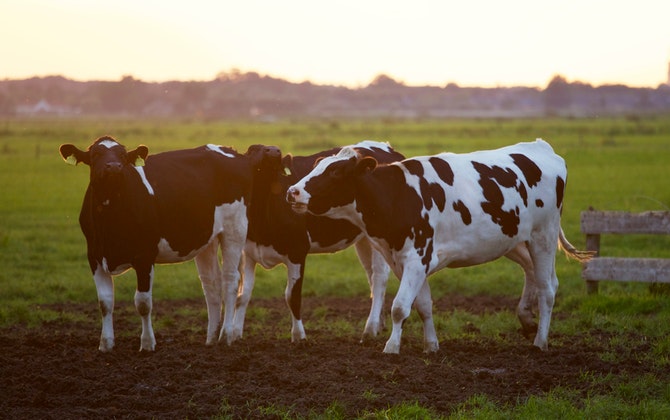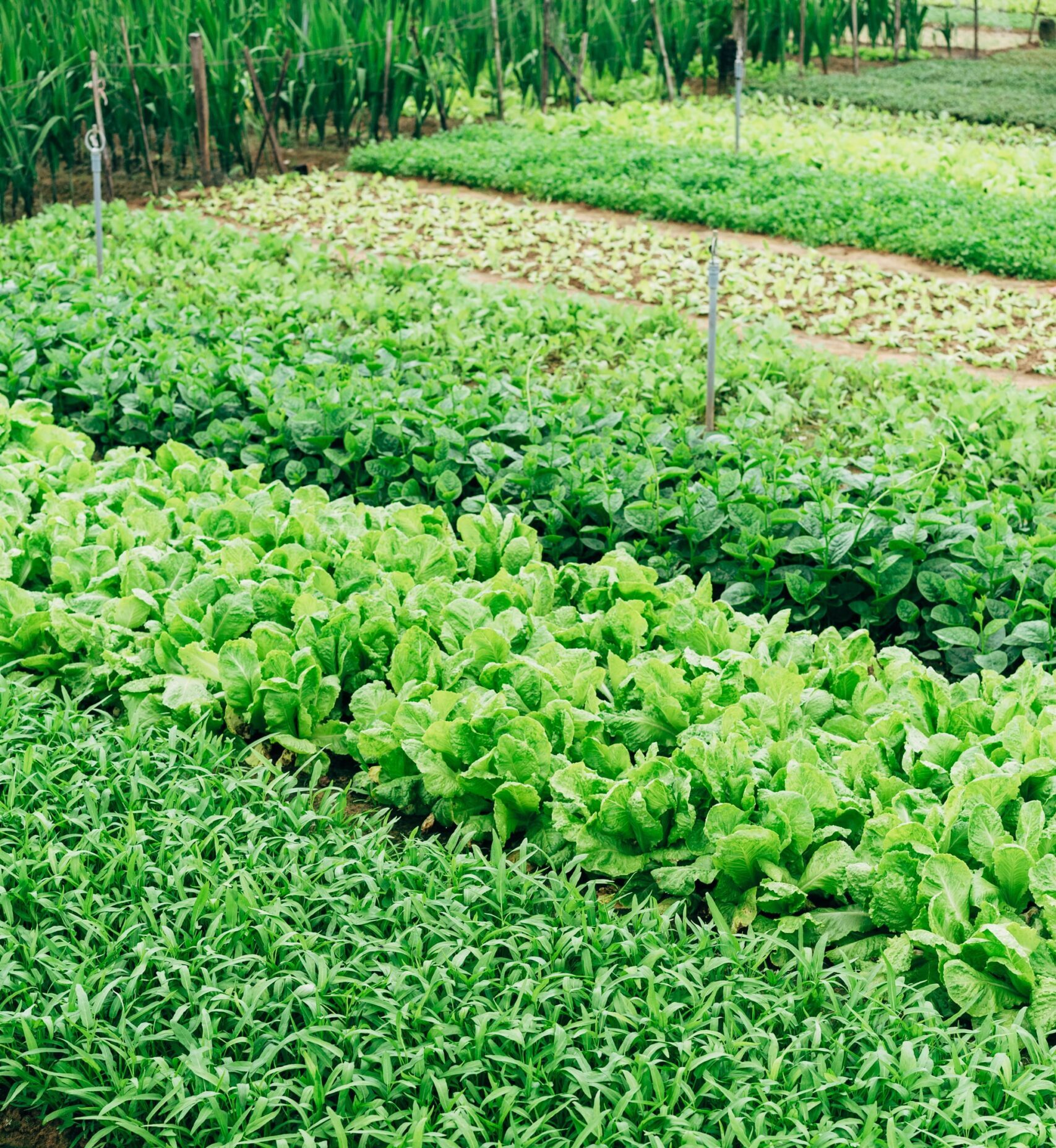A new floating dairy farm in the Netherlands seems promising to those who think animal agriculture can be more sustainable. On the surface, it looks like an interesting idea, but digging a little deeper reveals that like many efforts to make animal agriculture eco-friendly, it actually falls short of that promise.
How does a floating dairy farm work? Here’s how the structure is set up. The milk will be processed and packaged as different dairy products on the first floor of the structure. The cows will be housed and milked by robots on the second floor. This area is described as a “garden-like” enclosure. The third floor will serve as a greenhouse, where grass, clover, and other crops will be grown to feed the cows.
The structure is anchored to the bottom of the harbor to avoid shifting in inclement weather and making the cows seasick. The cows can also walk outside and graze in a pasture next to the river.

At first glance, this floating farm seems like a smart idea—after all, it’s probably better for the cows and the environment than factory farming. Sure, space-saving measures that conserve land are necessary. Curbing emissions by reducing the need for trucking food across long distances is also a move in the right direction. And in terms of animal welfare, this model is certainly an improvement compared to factory farming—at least the cows living in the floating farm can go outside and graze if they want.
But should we really be investing time and money into futuristic animal agriculture operations, or should we be focusing on the production of plant-based alternatives? Floating farms like this one won’t erase all of the problems with animal agriculture. It is neither environmentally-friendly nor humane.
The potential for pollution is also a major concern. Livestock farming operations already leech waste into surrounding areas, which can pose public health problems. If there is any sort of accident or malfunction at this facility, it could pollute the local waterways. Building a farm like this directly on the water leaves the river very vulnerable to pollution.
Plus, even grass-fed cows produce a ton of methane. Most people believe that CO2 emissions are the single biggest factor of climate change. But nitrous oxide and methane have 296 times and 23 times, respectively, the global warming factor (GWF) of CO2. While livestock farming contributes just 9% of global CO2 emissions, it is responsible for whopping 65% of nitrous oxide and 35% of methane emissions—and the most warming species by far is cows.
Instead of using innovation to do livestock farming, what would actually advance the future of agriculture is to focus on plants. One floor of this structure is already being used as a greenhouse—clearly, we can use structures like this to grow plant foods. This would be a much more eco-friendly use of space, with a lower risk of polluting the river with waste. And it follows that this would be more efficient and sustainable than growing plants to feed to cows.
And there is just no getting around the fact that the dairy industry is, and will always be, inherently cruel. In order to produce, package, and sell dairy for human consumption, female cows must be pregnant—therefore, to ensure consistent supplies to meet the demand, they have to be artificially inseminated against their will. The milk they produce is intended for their calves, so in order to collect it and bring it to grocery store shelves, their calves must be taken away from them. No matter how sleek and futuristic the farm is, no matter how the cows are fed, no matter if they can go outside and graze or not—there is no way to completely eliminate cruelty from the dairy industry.
With so many incredible plant-based alternatives already on the market, it is far better to invest in companies that are helping us to transition away from dairy. We’ve got almond milk, soy milk, oat milk, cashew milk, macadamia milk, hemp milk, and more—there is truly an alternative out there for everyone.
Projects like this seem interesting at first, but no matter how you look at it, animal agriculture is not the way forward. It’s time to move on from the idea that we can have our cake (er, cheese?) and eat it too—we can’t fight climate change and continue consuming meat, dairy, and eggs every day. We need to put our time, money, and energy into making sure that a plant-based diet is accessible and affordable for everyone.
Also by Jane: Feeling Stuck? How Future Self-Journaling Can Transform Your Life
For The Wellness Goddess On A Budget, 5 Tips For Self-Care That Save Major $$$
Get more like this—Subscribe to our daily inspirational newsletter for exclusive content!
__
Photo: Pexels




